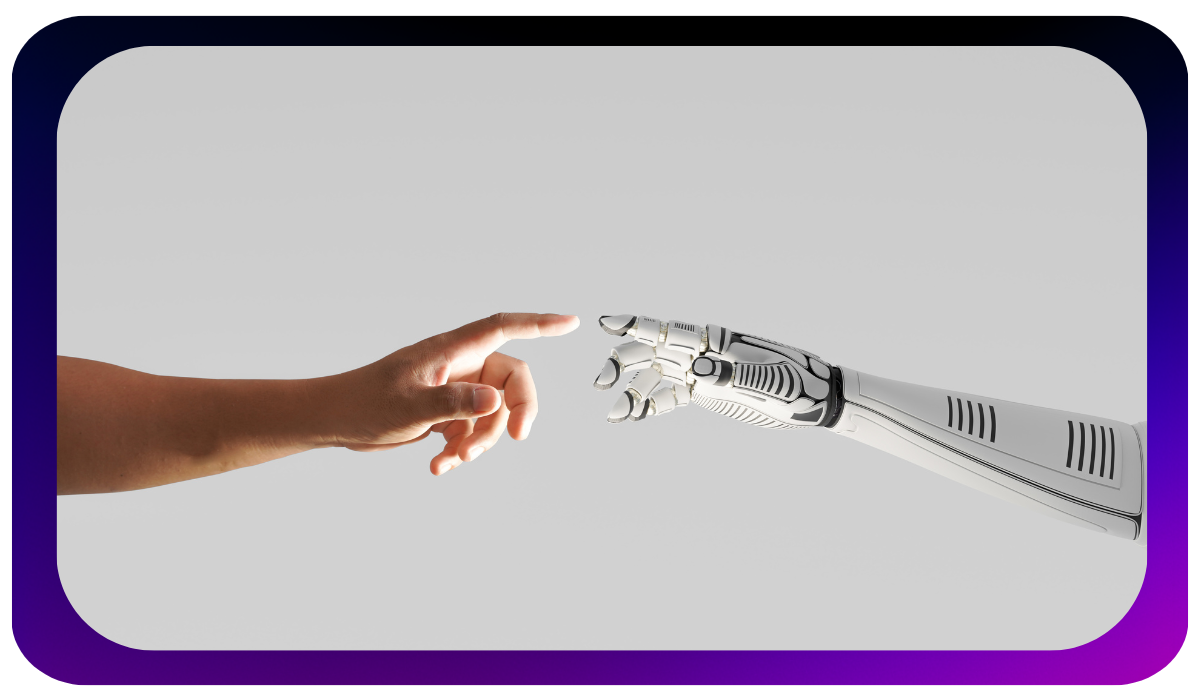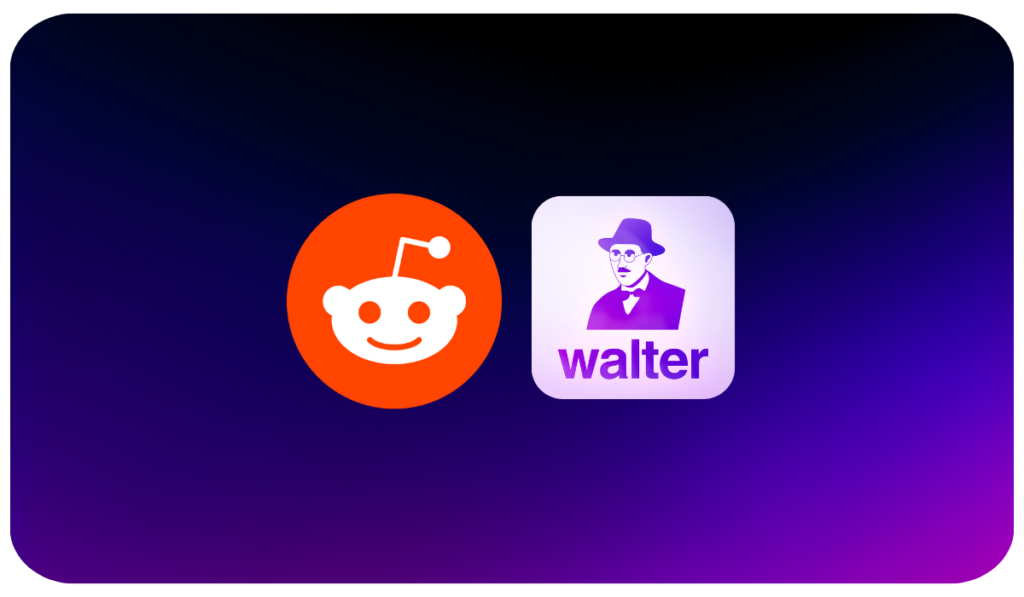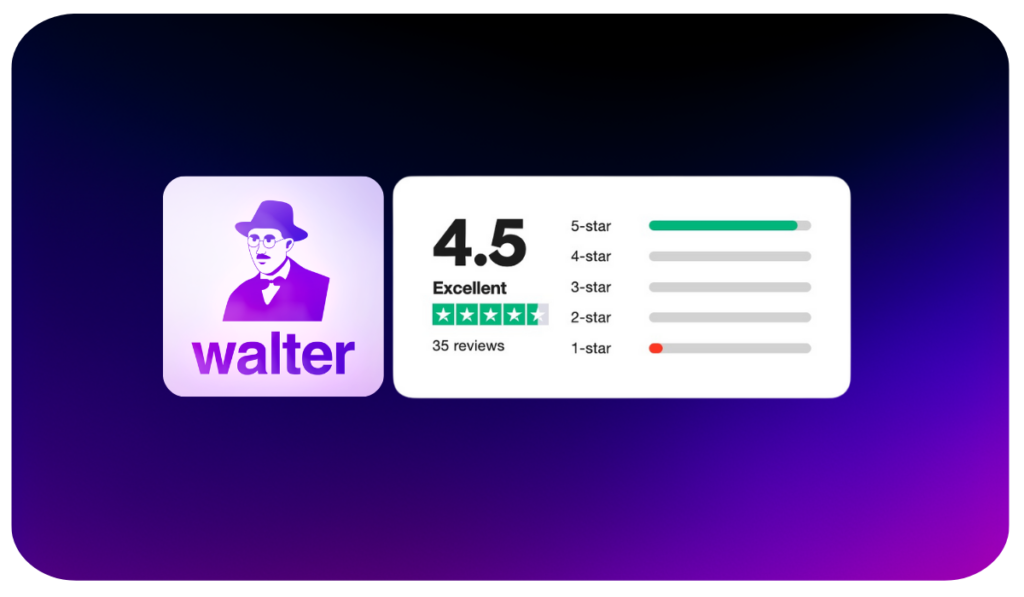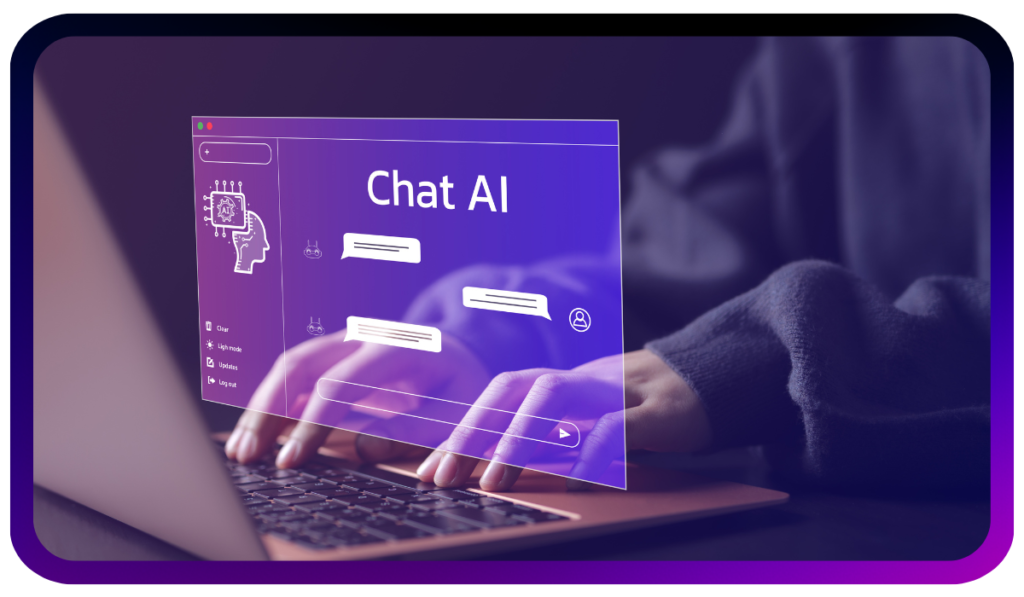Did you know that 70% of AI-generated content fails to pass detection tools and often feels robotic or uninspired?
That’s where AI humanizers come in.
AI humanizers are advanced tools that transform stiff, mechanical AI-generated text into natural, authentic, and human-like writing.
They refine the rough edges of AI output, adding nuance, personality, and emotional resonance to ensure your content connects with your audience.
Why does this matter?
AI-generated text, while efficient, often misses the mark.
It can sound overly formal, repetitive, or even robotic—qualities that don’t resonate in fields like marketing, education, or professional communication, where originality and connection are key.
And then there’s the issue of AI detection.
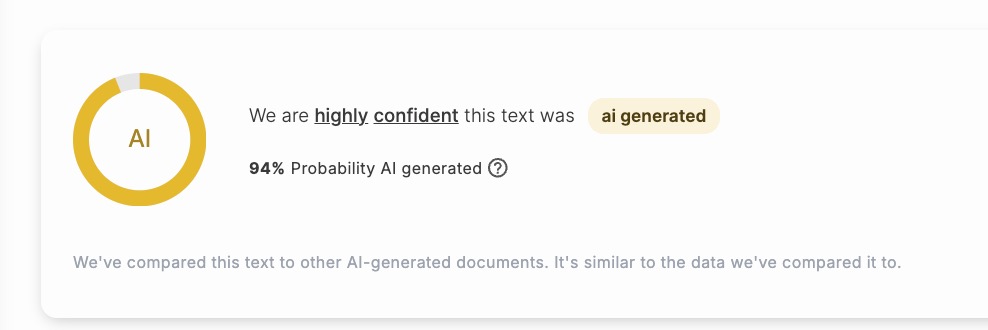
Advanced AI detection tools are becoming increasingly sophisticated, flagging AI-written text more accurately than ever before.
If your content is flagged as artificial, it could harm your credibility or limit its usability.
This is where AI humanizer tools like Walter Writes AI come in.
By rewriting AI-generated text into conversational, polished, and undetectable content, Walter AI bridges the gap between artificial and authentic writing.
Whether you’re working on an academic paper, marketing campaign, or SEO-friendly content, Walter AI ensures your text isn’t just read—it resonates.
Ready to see how it works?
Let’s dive into the basics of AI humanizers and discover what makes them indispensable in today’s digital landscape.
The Basics of AI Humanizers
What Exactly Are AI Humanizers?
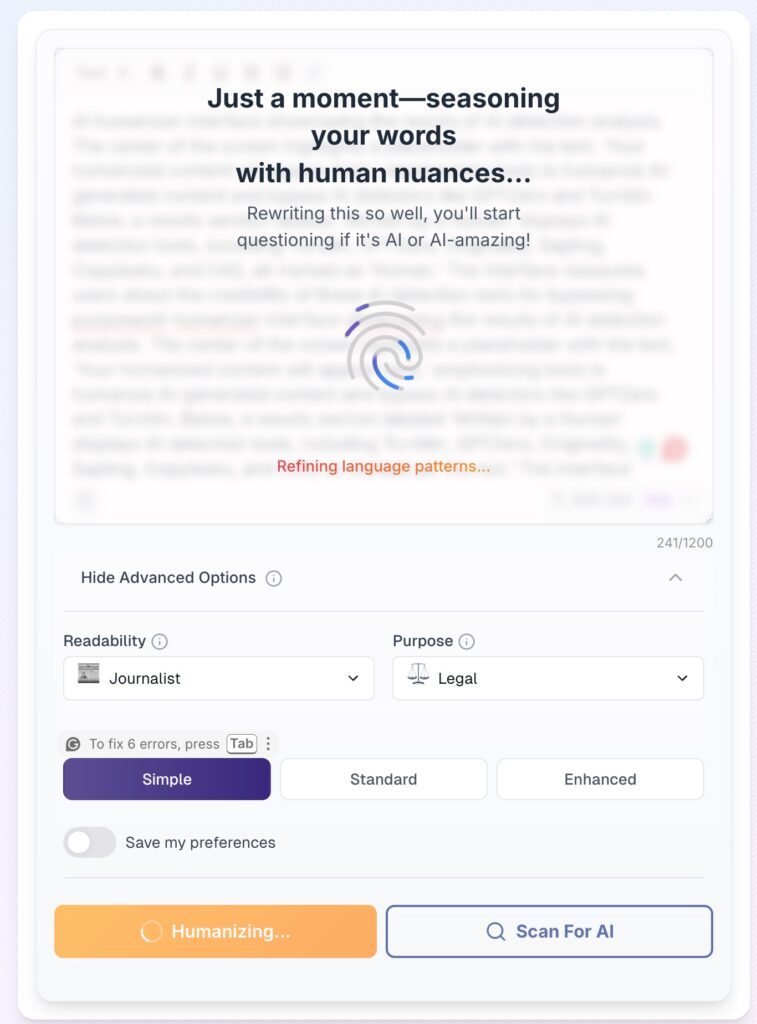
AI humanizers are tools or technologies that transform AI-generated text into content that mimics human writing styles, tone, and nuance.
Unlike basic paraphrasers or text spinners, AI humanizers take raw, robotic AI output and refine it into something that feels natural and engaging.
Why is this so important?
AI-generated text often falls flat. It can feel repetitive, overly formal, or completely lacking in emotional resonance.
That’s where AI humanizers step in—to fix these shortcomings and make the content more relatable, readable, and authentic.
Let me give you an example:
- An AI-generated blog might start out sounding dry or mechanical. A humanizer can rewrite it into something conversational and engaging that actually connects with readers.
- Academic content that could be flagged by AI detection tools can be rewritten to sound more natural, helping students and researchers avoid unnecessary issues.
- Even a legal document can be adjusted to ensure its tone aligns with professional standards while still being clear and concise.
Tools like Walter AI specialize in this, especially when it comes to making text undetectable by advanced AI detection tools.
By addressing issues of tone, flow, and originality, AI humanizers ensure your writing doesn’t just sound better—it feels human.
For a deeper understanding of these tools, check out our guide on How to Make ChatGPT Sound More Human.
Key Features of AI Humanizers
AI humanizers offer several standout features that make them indispensable for anyone working with AI-generated content. Let’s break down the core functionalities:
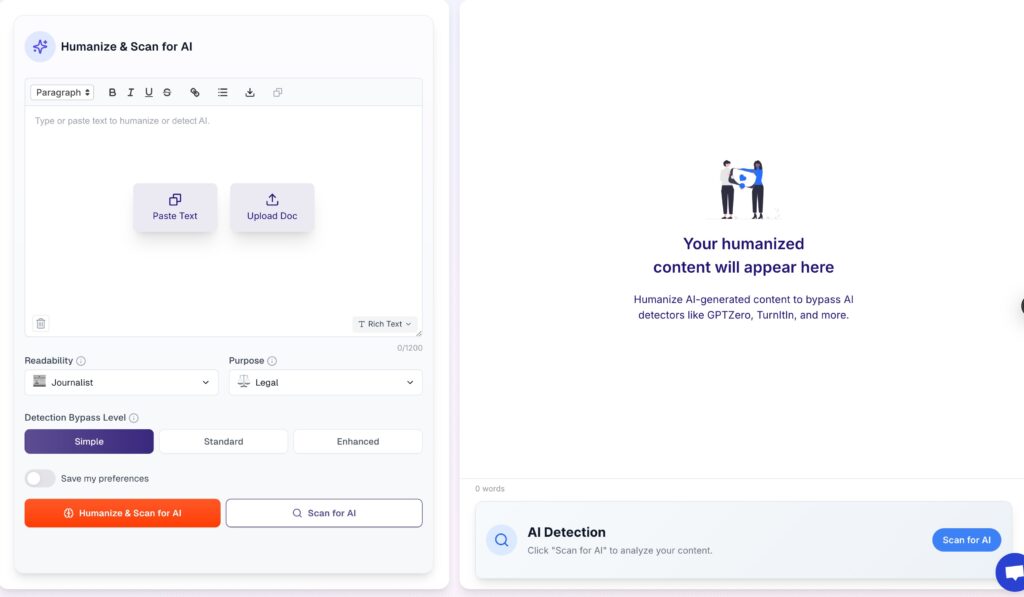
Ability to Mimic Human Writing Styles
- AI humanizers use advanced Natural Language Processing (NLP) to replicate human writing patterns, grammar, and tone.
- They allow you to adjust for different styles, whether you need something professional, conversational, or creative.
- Example: If you’re turning a straightforward AI draft into a relatable blog post, humanizers make the process seamless.
For more about improving human-like writing, visit our Best AI Humanizer for Turnitin guide.
Tone and Voice Adaptation
- These tools can fine-tune the tone and voice of your content to match your specific needs.
- Professional for business documents.
- Friendly and engaging for blogs or social media posts.
- Authoritative for research papers or white papers.
- Example: SaaS companies use AI humanizers to ensure their content aligns with their brand’s tone and personality.
Detection and Rewriting for Originality
- AI humanizers analyze text for patterns that detection tools like GPTZero or Turnitin might flag.
- They rewrite these sections to make the content undetectable as AI-generated while preserving originality.
- This feature is especially useful for academics, researchers, and businesses needing unique, human-like writing.
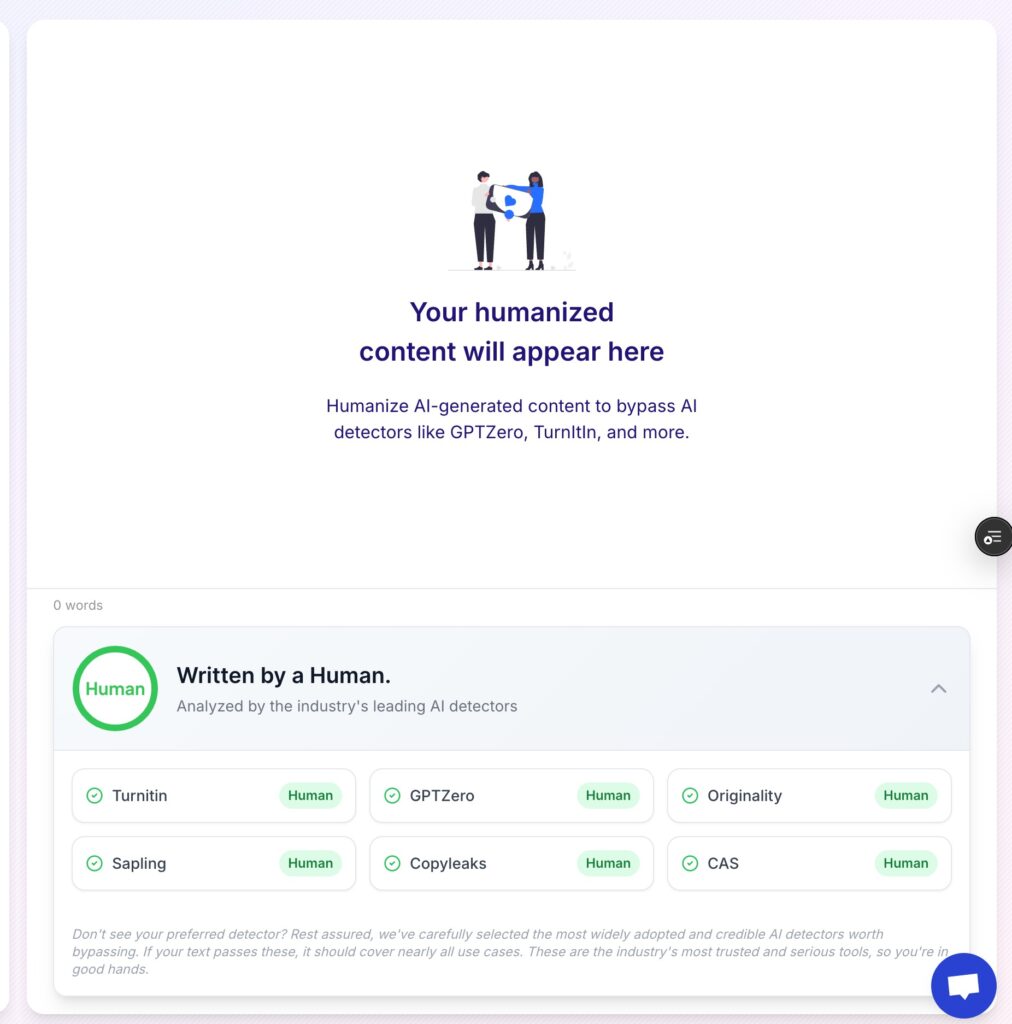
Want to ensure your essay is undetectable? Check out our How to Make Your Essay Undetectable guide.
Support for Multiple Languages
- Advanced AI humanizers, including Walter AI, offer multilingual support.
- This feature lets users create natural-sounding content in over 20 languages, making it ideal for global businesses or diverse audiences.
Scalability for High-Volume Content
- Need to process a lot of content quickly? AI humanizers are built for scalability.
- They handle large batches of text without compromising quality, making them perfect for content managers or SaaS companies producing blogs, white papers, or case studies regularly.
- Example: A business producing weekly blog posts can streamline their workflow using AI humanizers to save time and maintain quality.
By understanding these features, it’s clear that AI humanizers aren’t just tools—they’re essential for creating engaging, human-like content in today’s digital world.
Why Are AI Humanizers Important?
Challenges with AI-Generated Content
Let’s be honest: while AI-generated content has come a long way, it’s not perfect. It often struggles with:
- Robotic Tone and Lack of Natural Flow: AI tools like ChatGPT or Jasper sometimes produce text that feels stiff or overly mechanical. Instead of sounding conversational or engaging, it reads like it’s straight out of a manual.
- Risk of Being Flagged by AI Detection Tools: Advanced AI detection tools, such as GPTZero and Turnitin, are getting better at identifying AI-generated text. According to recent studies, over 60% of AI-generated content can be flagged, which poses a problem for students, researchers, and professionals.
- Lack of Emotional Resonance: For creative professionals, this is a big one. AI-generated content often misses the subtlety and emotion needed to connect with readers on a deeper level. Whether it’s a heartfelt blog or a persuasive marketing email, AI can struggle to convey human-like emotion and nuance.
These challenges highlight the limitations of relying solely on AI tools to produce high-quality, relatable content.
That’s where AI humanizers come in, bridging the gap between efficiency and authenticity. For tips on addressing these issues, check out our guide on AI Content Challenges.
Benefits of Using AI Humanizers
AI humanizers solve these challenges by transforming AI-generated content into something more polished, relatable, and impactful. Here’s how:
- Improved Engagement and Readability: Humanized content flows naturally, making it easier for readers to connect with the message. This is especially valuable in marketing and education, where engaging content drives results.
- Avoid AI Detection Issues: By refining text to eliminate AI-like patterns, AI humanizers help users bypass detection tools like Turnitin and GPTZero. This is crucial for students submitting academic work or professionals publishing online.
- Preserve or Enhance Brand Tone and Voice: AI humanizers ensure that content aligns with your brand’s personality, whether it’s professional, casual, or creative. Maintaining a consistent tone is key to building trust with your audience.
- Save Time and Resources: AI humanizers streamline the editing process, reducing the need for manual rewrites. This allows you to produce high-quality content quickly and efficiently.
- Maintain Quality at Scale: Whether you’re creating a single blog post or managing an entire content calendar, AI humanizers ensure consistency and quality, even for large-scale projects.
By addressing the key challenges of AI-generated text, AI humanizers have become indispensable tools for writers, businesses, and educators.
They’re not just about making content better—they’re about making it truly human-like. To explore how these tools can enhance your writing, visit our guide on The Benefits of AI Humanizers.
How Do AI Humanizers Work?
The Technology Behind AI Humanizers
AI humanizers rely on advanced technologies to transform robotic, AI-generated text into content that reads naturally and authentically. Let’s break down the core technologies that make this possible:
- Natural Language Processing (NLP): At the heart of AI humanizers is NLP, which ensures proper syntax, grammar, and sentence structure. This technology enables the tool to identify awkward phrasing or mechanical patterns and replace them with more natural alternatives. NLP also helps adapt the text to different contexts, whether it’s casual, professional, or creative.
- Tone and Sentiment Analysis: This feature evaluates the emotional tone of the content and adjusts it accordingly. For example, it can make a text more empathetic for personal communication or more authoritative for academic writing. Tools like Walter AI excel in sentiment adaptation, ensuring the tone matches the intended audience.
- Machine Learning Algorithms: AI humanizers use machine learning to continuously improve. By analyzing vast amounts of data, these algorithms learn how humans write, making the tool better at replicating natural writing patterns over time. This self-improvement ensures the output stays relevant and high-quality as AI detection tools evolve.
These technologies work together to create content that’s not only undetectable by AI detection tools but also relatable and engaging for readers. For a deeper dive into how NLP is shaping AI content, check out this resource from IBM on Natural Language Processing.
Step-by-Step Process of Humanizing Content
Here’s a closer look at how AI humanizers like Walter AI refine raw AI-generated text into polished, human-like content:
Step-by-Step Process of Humanizing Content
- Input Raw Content:
The first step is uploading or pasting AI-generated text into the humanizer tool. This could be anything from an email draft to an academic essay or marketing copy.
- Analyze Tone and Structure:
The tool then evaluates the content’s tone, structure, and flow. For instance, it identifies whether the text feels overly formal, repetitive, or lacks emotional resonance. This analysis helps pinpoint areas for improvement.
- Rewrite for Human-Like Nuances:
Using technologies like NLP and tone analysis, the tool rewrites the text to include natural sentence variation, conversational tone, and human-like phrasing. This step ensures the content feels relatable and engaging.
- Verify Originality and Bypass Detectors:
Finally, AI humanizers cross-check the text against AI detection tools and plagiarism databases. The goal is to ensure the content is undetectable as AI-generated while maintaining originality.
For example, Walter AI goes beyond basic paraphrasing by tailoring the text to specific audience needs. Whether you’re crafting a blog post or refining a research paper, it ensures the final output is polished and credible.
This multi-step process is what makes AI humanizers indispensable for writers, marketers, and educators.
For more on how to optimize your content, visit our guide on undetectable AI writing or check out this external analysis from Forbes on AI and Content Creation.
By combining cutting-edge technology with a clear, user-friendly process, AI humanizers ensure your content not only looks human but also connects with readers on a deeper level.
Use Cases of AI Humanizers
For Students
Students face unique challenges in creating essays, reports, and research papers that meet academic standards while avoiding plagiarism and detection by AI tools. AI humanizers provide essential support by:
- Rewriting and Refining Drafts: These tools ensure that AI-generated drafts are original and coherent, making it easier for students to meet academic expectations.
- Maintaining Academic Integrity: By bypassing AI detection tools like Turnitin and Grammarly’s AI detection features, AI humanizers help students submit work that’s undetectable as AI-generated.
- Enhancing Readability for Non-Native English Speakers: For students whose first language isn’t English, AI humanizers improve fluency and readability, ensuring their work is polished and professional.
Example: A student uses Walter AI to refine a research paper generated by an AI tool, ensuring it meets university plagiarism standards while maintaining a formal academic tone.
For more information on academic writing with AI, check out Walter Writes for Students.
For SEO Professionals
SEO professionals often need high-quality, keyword-rich content that ranks well in search engines while remaining engaging for readers. AI humanizers help overcome these challenges by:
- Balancing Readability and SEO Optimization: These tools naturally integrate keywords into content without overstuffing, ensuring it reads smoothly and authentically.
- Improving Engagement Metrics: Humanized content reduces bounce rates and increases time on page, key factors for SEO success.
- Rewriting for Multiple Formats: From meta descriptions to blog posts and landing pages, AI humanizers ensure SEO content is both search-engine-friendly and undetectable by AI detectors.
Example: An SEO professional uses Walter AI to humanize AI-generated blog content for a SaaS company, improving search engine rankings and user experience.
For more tips on SEO-friendly AI content, visit Moz’s AI and SEO Guide.
For Writers and Journalists
AI humanizers have become invaluable tools for writers and journalists, especially those who rely on AI assistance for drafting content. These tools help:
- Create Authentic Content: Journalistic standards demand credibility and authenticity. AI humanizers refine AI-generated drafts into polished articles that feel human, preserving journalistic integrity.
- Avoid Detection Issues: With the rise of AI detection tools, using AI assistance for writing can sometimes pose risks. AI humanizers ensure content reads naturally and passes undetected, making them a critical asset for journalists working on tight deadlines.
- Enhance Style and Voice: Writers can tailor AI-generated content to match their unique style or publication standards, ensuring consistency across all pieces.
For more tips on how to create authentic content, check out this guide from Nieman Lab on AI’s role in journalism.
For Researchers and Academics
Researchers and academics are increasingly turning to AI humanizers to meet strict academic standards while saving time. These tools help:
- Produce Plagiarism-Free Papers: AI humanizers rewrite text to ensure originality, helping researchers avoid plagiarism issues while maintaining the credibility of their work.
- Ensure Compliance with Academic Integrity Standards: By refining AI-generated content, humanizers align papers with ethical guidelines, ensuring they pass plagiarism checks and adhere to institutional policies.
- Streamline Academic Writing: Whether it’s drafting research papers or preparing grant proposals, AI humanizers make academic writing more efficient without compromising quality.
For insights into using AI responsibly in academia, explore this article from Elsevier on AI and research integrity.
For Businesses and SaaS Companies
In the business world, particularly for SaaS companies, AI humanizers are reshaping how brands create and manage content. These tools help:
- Craft Engaging Marketing Content: AI humanizers transform basic AI-generated drafts into dynamic blog posts, email campaigns, and landing page copy that engage readers and drive conversions.
- Improve SEO Performance: By creating natural-sounding, human-like content, these tools boost SEO rankings, helping brands reach their target audiences more effectively.
- Maintain Consistent Brand Tone: AI humanizers ensure that all content aligns with the company’s voice and tone, creating a cohesive brand presence across platforms.
Check out this resource from Moz on AI and content creation for strategies for improving SEO with AI.
AI humanizers are proving their worth across industries, from students, SEOs, journalists, and academics to businesses.
By bridging the gap between AI efficiency and human authenticity, these tools empower professionals to create content that resonates and delivers results.
Walter Writes AI: A Leading AI Humanizer
How Walter AI Helps Students Create Original, Plagiarism-Free Content
Why Students Need Walter AI:
Students often face challenges when using AI tools for academic writing. Plagiarism risks, AI detection by tools like Turnitin, and achieving a formal academic tone are common hurdles.
Additionally, non-native English speakers may struggle with fluency and clarity in their writing.
How Walter AI Helps:
- Plagiarism-Free Content: Walter AI rewrites and refines AI-generated text, ensuring it’s undetectable by plagiarism checkers and AI detection tools like Turnitin or Grammarly.
- Rephrases Content Naturally: It rephrases text in a way that feels authentic, eliminating repetitive or robotic phrasing.
- Bypasses AI Detectors: Walter AI ensures that content cannot be flagged as AI-generated, effectively bypassing advanced detection tools.
- Improved Academic Tone: It enhances readability and adjusts sentence structure to meet formal academic standards, making papers more polished and professional.
- Time-Saving: Walter AI helps students transform rough drafts into polished, original papers quickly and efficiently, allowing them to focus on other priorities.
Example: A student uses Walter AI to refine a research paper draft created with an AI tool. Walter AI improves the grammar, clarity, and tone, ensuring the paper meets university standards and bypasses detection tools.
For more details on how Walter AI supports students, check out Walter Writes for Students.
How Walter AI Supports SEO Professionals in Driving Rankings
Why SEO Professionals Need Walter AI:
SEO professionals often struggle with AI-generated content that’s either robotic or keyword-stuffed. Such content can hurt engagement metrics like bounce rates and time on page, which are critical for search engine rankings.
How Walter AI Helps:
- Natural Keyword Integration: Walter AI seamlessly incorporates keywords into content without making it feel forced or repetitive, improving both readability and rankings.
- Boosts User Engagement: By enhancing tone and flow, Walter AI helps improve key SEO metrics, such as click-through rates (CTR) and average time on page.
- Optimized Content for Multiple Formats: From meta descriptions to blog posts and landing pages, Walter AI ensures your content is both SEO-friendly and engaging.
Example: An SEO specialist uses Walter AI to rewrite a blog post for a SaaS company. The result is a humanized, optimized piece that ranks higher in search results and retains reader attention longer.
For more on SEO-friendly AI tools, visit Moz’s Guide to AI and SEO.
How Walter AI Helps Businesses and SaaS Companies Humanize Content
Why SaaS Companies and Businesses Need Walter AI:
Businesses, particularly in the SaaS industry, rely heavily on content marketing to generate leads and nurture prospects. However, AI-generated content often fails to capture a brand’s unique voice, making it harder to build trust with audiences.
How Walter AI Helps:
- Brand Voice Consistency: Walter AI ensures all content aligns with the company’s tone and messaging, whether it’s a blog post, case study, or product description.
- Improved Engagement and Conversions: By rewriting content to make it more human-like, Walter AI helps businesses increase engagement and drive leads.
- SEO-Optimized Content: Walter AI helps create blogs and landing pages that rank higher in search engines while maintaining a professional, personal tone.
Example: A SaaS company uses Walter AI to rewrite their weekly blogs and product pages. As a result, their organic traffic increases by 30%, and engagement metrics like time on page and user comments improve significantly.
For strategies on humanizing SaaS content, visit this Forbes article on AI in content marketing.
Walter AI stands out as a leading AI humanizer for students, professionals, and businesses.
By addressing specific needs across industries, it’s helping users achieve original, human-like content that connects and performs.
Frequently Asked Questions About AI Humanizers
Common Questions Answered
AI humanizers go beyond simple rewording. While paraphrasing tools replace words or phrases with synonyms, AI humanizers refine text by improving tone, flow, and readability. They make AI-generated content feel natural and human, which is essential for professional or academic use.
Not entirely. AI humanizers are powerful tools that assist in editing and refining content, but they lack the creativity, emotional intelligence, and contextual understanding that human writers bring. They’re best used to enhance AI-generated drafts or support high-volume content needs.
Yes, AI humanizers are legal to use. However, users must ensure they comply with ethical guidelines, especially in academic settings, where originality and proper citation are critical. Tools like Walter AI help students and professionals meet these standards by producing plagiarism-free and undetectable content.
AI humanizers rewrite content using advanced Natural Language Processing (NLP) to remove AI-like patterns, making it indistinguishable from human-written text. For example, Walter AI bypasses tools like Turnitin and GPTZero while maintaining readability and originality.
AI humanizers can refine a wide range of content, including:
Academic essays and research papers.
Blog posts and marketing copy.
Business documents and email campaigns.
For a deeper dive into these tools, explore this article on the future of AI writing tools.
Conclusion: The Role of AI Humanizers in the Future of Content
AI humanizers have quickly become indispensable for anyone working with AI-generated content.
They solve the biggest challenges of AI writing, from robotic tone to AI detection, by refining text into something that feels human, relatable, and authentic.
Whether you’re a student aiming to meet academic standards, a marketer improving SEO rankings, or a business looking to build trust with your audience, AI humanizers like Walter AI are here to help.
By combining advanced technology with user-friendly tools, Walter AI ensures your content isn’t just better—it’s undetectable, engaging, and impactful.
Ready to transform your content? Try Walter AI for free today and experience the difference in humanized AI writing.

